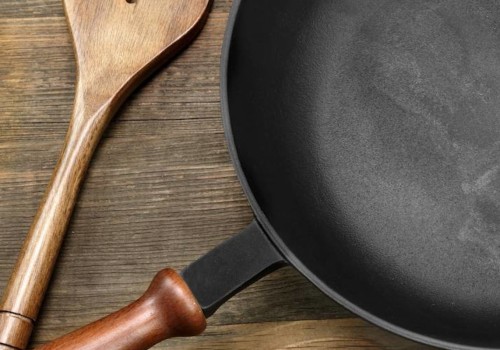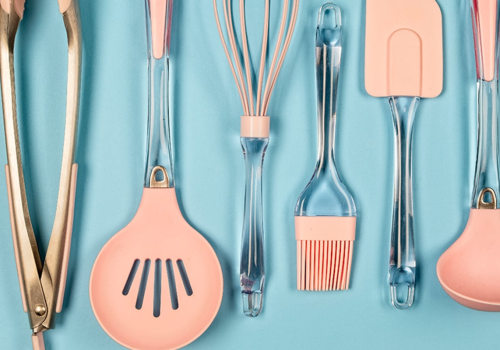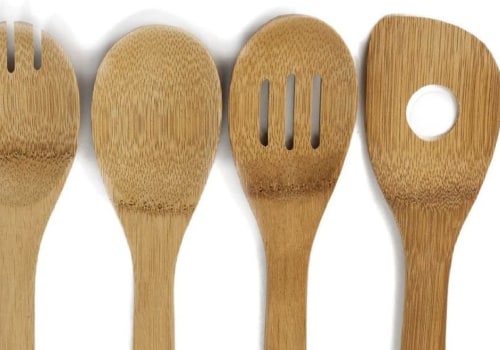Cleaning up after cooking is a breeze and the softness of the material makes it suitable for children. Silicone is a great option as it is flexible, soft and non-stick. Stainless steel is one of the most widely available cooking vessels and it is a great choice. Not only can you cook a variety of dishes, but it also preserves up to 70 percent of the nutrient content of foods.
However, avoid buying stainless steel utensils that are polished with chrome or nickel, as they can be hazardous to your health. Cast iron is another strong and durable metal that can be used for cooking. When cooking food in cast iron cookware, small amounts of iron seep out, which is actually beneficial for our health. However, if you have an iron overload in your body, it's best to avoid using such utensils.
Modern cast iron cookware comes with a secure coating to reduce iron leaching; these utensils are also more durable and easier to care for. Glassware is one of the safest kitchen utensils you can use for cooking as it is a non-reactive material, meaning it does not release any harmful elements into foods being cooked or absorb any nutrients from food. The only limitation associated with glassware is that it is mainly used for microwave cooking. Brass utensils are excellent for preserving the optimal way to keep most of the nutrients intact in the food being cooked.
The only drawback or inconvenience of using these utensils is cleaning them, since special care must be taken when washing them. Also, do not cook food in brass utensils if the food is too acidic in nature. Bronze utensils tend to keep approximately 97 percent of the nutritional quotient of foods intact. However, be aware of any tin or nickel that may be added to these utensils, as it can cause health risks.
Buying from a well-known or trusted source is a better way to buy some authentic bronze utensils. Clay heats up slowly and therefore helps retain moisture and nutrients in food intact. The biggest drawback associated with crock pots is that it takes longer to cook compared to other materials. Also, be sure to buy unglazed pots instead of picking up glazed ones, as the latter can use harmful chemicals that can be released during the cooking process.
Bamboo products are becoming increasingly popular but many brands don't publish if their items are made of 100% pure bamboo or if there are additional ingredients that could be harmful, such as glue that contains formaldehyde. The European Commission recently published an article to help combat false claims of materials and food products labeled as “green” when using potentially harmful additives. If you want to buy bamboo products, try buying bamboo utensils that specifically state that they are not made with glues or lacquers. BPA (bisphenol A) is a chemical ingredient found in many plastic products since the 1950s and research has shown that exposure to BPA through leaching plastic products into food or other areas can cause health problems such as type 2 diabetes, behavioral problems, and more. Many utensils and plastic products now carry BPA-free labels to ensure their safety. A sturdy cutting board made from wood or bamboo is a great way to avoid plastic when cutting vegetables; however, switch to an epicurean board when cutting meat.
Lead and copper have been linked to diseases so FDA imposed limits on the amount of lead in tableware; however, ceramic items manufactured in other countries or considered handcrafted, antique, or collectible may exceed the recommended amount. The FDA also cautions against using uncoated copper cookware as metal can easily leak into acidic foods and cause copper toxicity. Non-stick, scratch-resistant anodized aluminum cookware is a good choice as it has a hard surface which is easy to clean and it is sealed so that aluminum cannot enter food. In the past there has been concern that aluminum cookware increases the risk of Alzheimer's disease; however, Alzheimer's Association reports that the use of aluminum cookware is not a major risk for the disease (uncoated aluminum cookware being a greater risk).Stainless steel cookware is inexpensive and can be used at high temperatures; it has a sturdy cookware surface that doesn't wear out easily and most stainless steel cookware has copper or aluminum bottoms for even heating; stainless steel health problems are rare. Stainless steel is an excellent choice for cooking and baking because it is durable and non-reactive; as long as the pots and pans you use are made of quality stainless steel you won't experience any nickel and chrome leaching (something you should consider when buying lower-priced sets). Silicone molds are also great anti-scratch utensils that protect your pots and pans due to its soft texture. Iron cookware can be a good choice too; cooking in cast iron pots can increase the amount of iron in your diet (most of the time this is a very small source of dietary iron). There has been concern about a possible link between Teflon and perfluorooctanoic acid (PFOA), a man-made chemical; however, Environmental Protection Agency states that Teflon does not contain PFOA so cookware poses no danger. Children should be protected from ceramic cookware containing lead; some ceramic cookware should not be used to hold food (including items purchased in another country or that are considered handicrafts, antiques, or collectibles) as they may not meet FDA specifications. May cause burns if it's too hot but research has shown that the amount of aluminum that this cookware filters into food is very small.



